
2. Gilbana, mother of five, is the furnace of this “tribe”. She works tirelessly from dawn to dusk. At times she leaves the family for months seeking better-paid season work. Here she chops down an old wooden window frame to start a fire in their stove. 2018 © Claudia Leisinger
Shutter Hub member Claudia Leisinger is exhibiting with us in Time to Think, which is currently showing until 30 November 2019 at Festival Pil’Ours in St Gilles Croix de Vie, France. We met Claudia at FORMAT Festival, where she introduced us to her project, Europe Revisited: Building A Future For The Roma.
Claudia is especially drawn to subjects of migration, employment and environment; to stories and situations of imminent change. She looks at ordinary people, institutions and geographical areas on the cusp of events that, though sometimes appear subtle, can often have huge and wide-ranging effects on their lives or status. Her work has been published by Wall Street Journal, Foreign Policy magazine, Buzz Feed, The Telegraph Magazine, and The Big Issue.
Here we’ve invited Claudia to share more about Europe Revisited: Building A Future For The Roma.

One of the first houses in Bangladesh, a Roma Settlement on the outskirts of Novi Sad that got access to the water mains. Novi Sad 2018 © Claudia Leisinger
Last year I started documenting six Roma families living in substandard houses. Roma are the third-largest minority group in Serbia. Their existence and way of life within the Balkans is longstanding, complex and challenging. They often live on the margins of society, subject to widespread poverty and discrimination.
In Serbia alone there are more than 600 settlements without access to essentials, like water, sewage and electricity. Recently the UN released a statement of concern about the Romas exclusion, inequitable access to education, housing, employment and legal protection.
Serbia, currently in accession talks with the EU, now has an obligation to address integration of minorities as part of its entry requirements. In a collaborative project with the EU & UN, Serbia is building social housing.
Unfortunately, many of these are built without the communities’ input and their success rate is underwhelming.
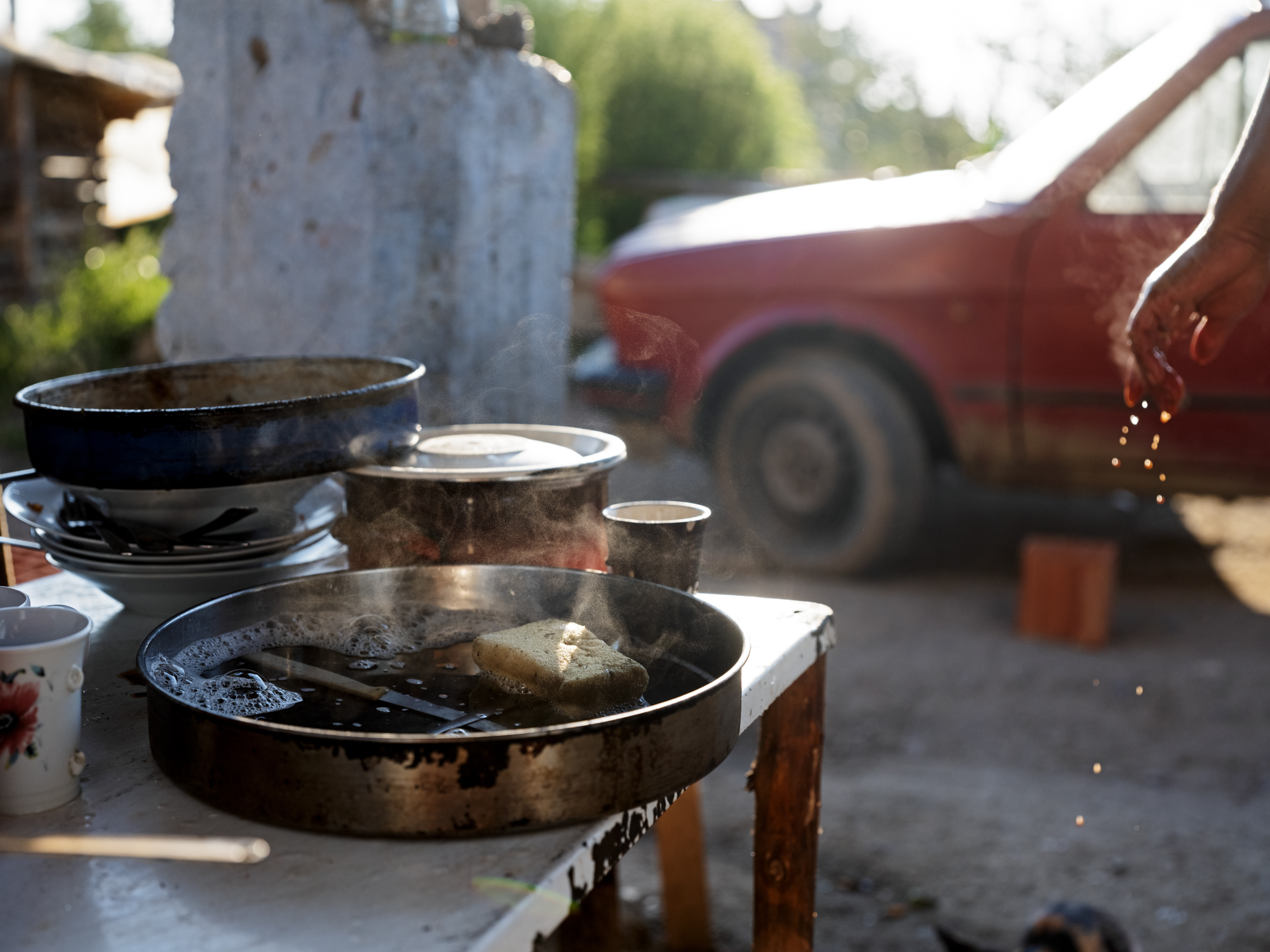
Sunday morning and Balkaza cleans the dishes. She had to heat up the water from the well on her stove first, which needed to be fired up before that. © Claudia Leisinger

Kristina pours water from the well onto her father’s legs, so he can wash himself. All nineteen wash themselves outside with water from the well. Sometimes they heat it up on the stove and wash themselves in a tub. None of the houses have indoor toilets yet. They use two makeshift toilets in the nearby woods instead. © Claudia Leisinger
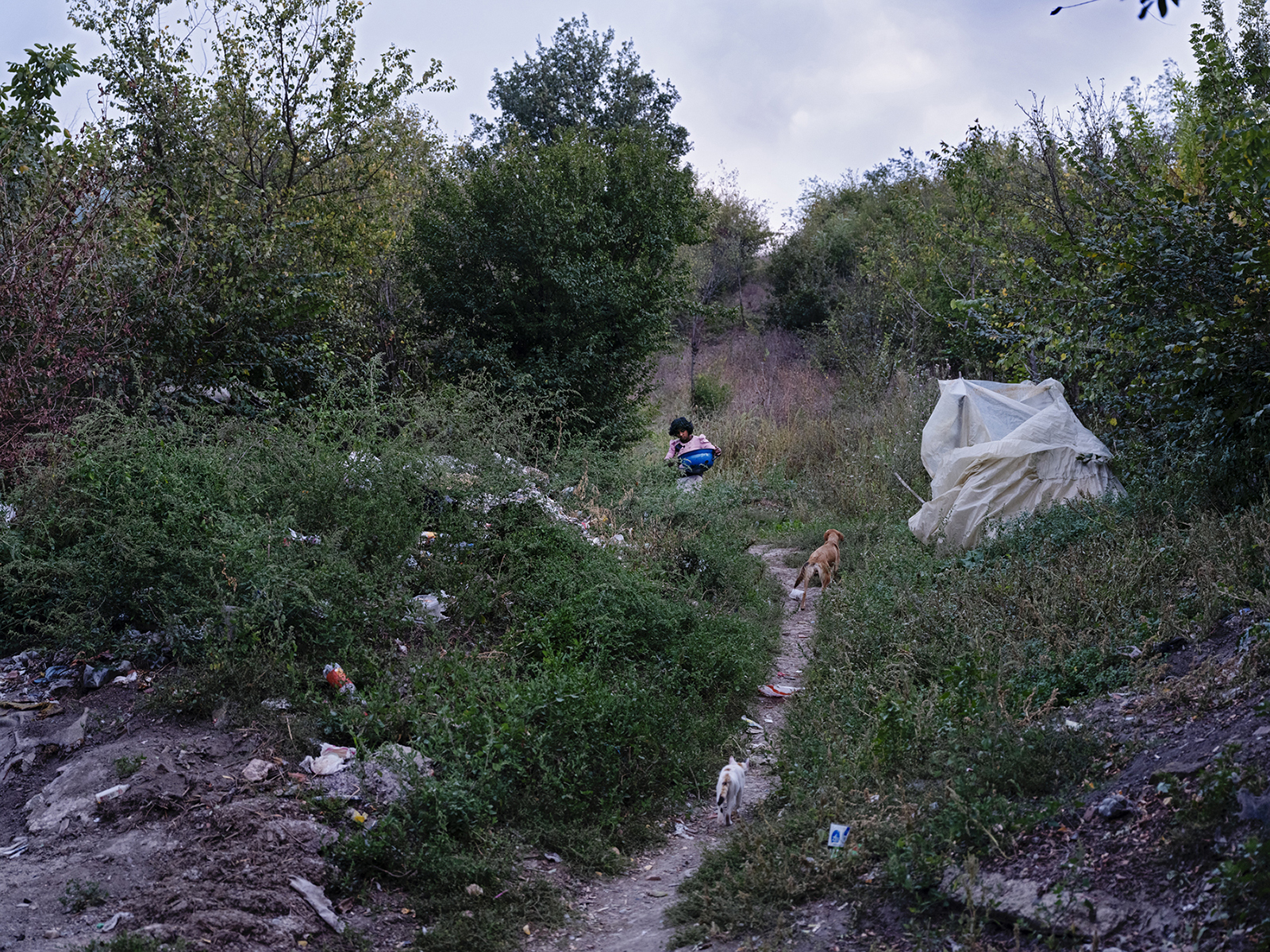
The current toilet area is in a little wood just a few meters above the houses. The two toilets are very basic – a hole in the ground with a couple of pieces of wood laying across it for the feet to stand on. © Claudia Leisinger
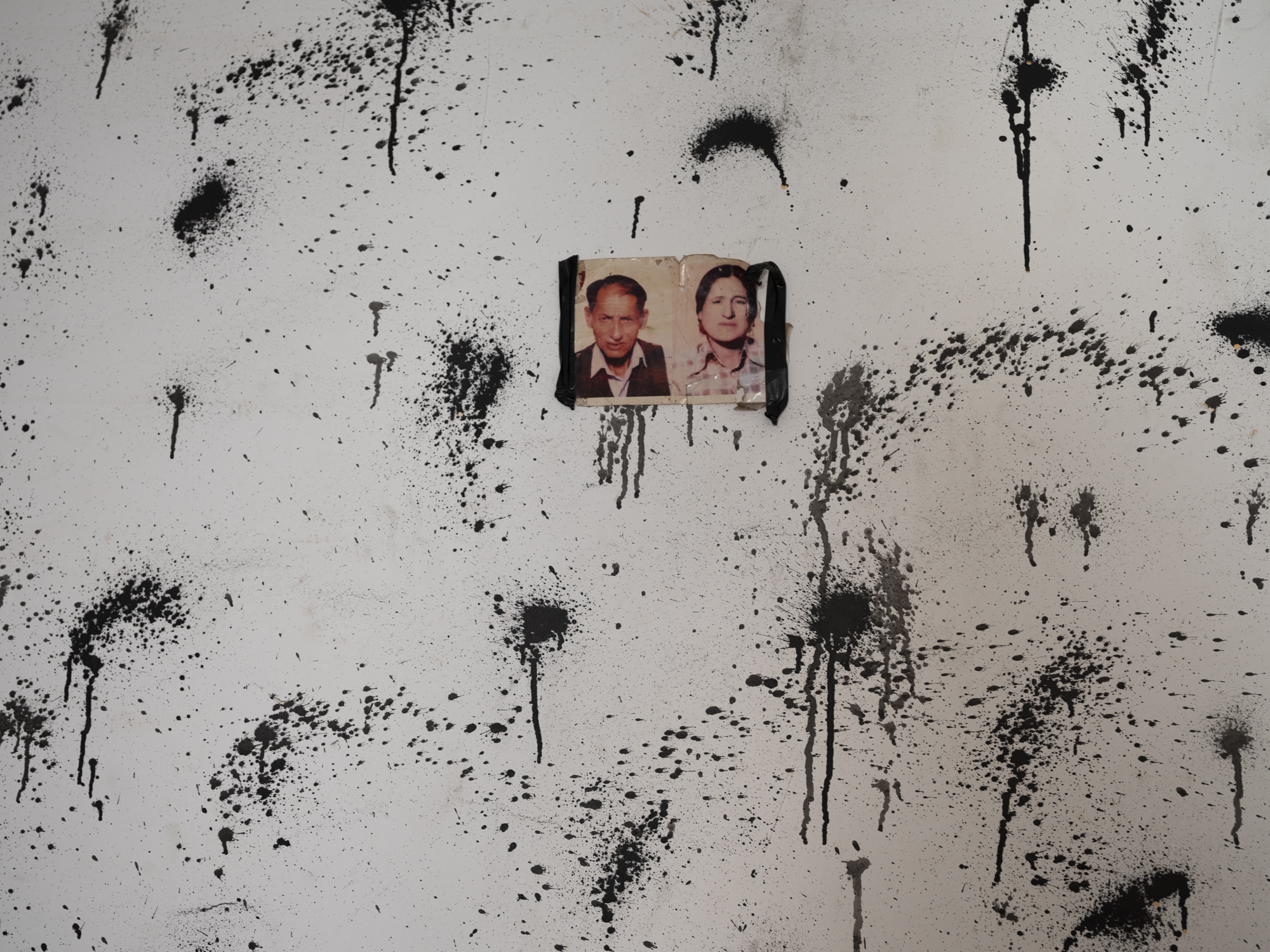
A very typical interior wall decoration of a Roma family home: memories of the ancestors hang on the wall, however there is not enough money to buy a frame. © Claudia Leisinger
So the question arises: how can shared but finite resources and services be distributed in a more effective and inclusive manner?
One project, the Dweller Driven Upgrading of Roma Settlements, run by the charity HEKS and their Serbian partners EHO, takes a more holistic approach. It helps Roma families upgrade their existing, substandard domiciles, step by step, by themselves.
From initial application to actual construction, the families are in an active position. Once the application is approved, the municipality must supply deeds to the land and provide access to water, electricity and sanitation.
While staying with these families, I realised that longstanding poverty in a monetary-based society is so much more eroding then I had ever understood. It slowly seeps into every aspect of life. It corrodes one option for improvement after another, until the person is rendered truly powerless.
From the small tooth infection left untreated because there is no money, which potentially is leading to a disfiguring abscess, to the more mundane but daily invasion of fleas: the experience is often that of a hostile environment.

Dino & Marija listen to a mutual friend talk about employment and his life abroad in Germany. Finding employment is one of the biggest problems for Roma and Serbian people alike. © Claudia Leisinger
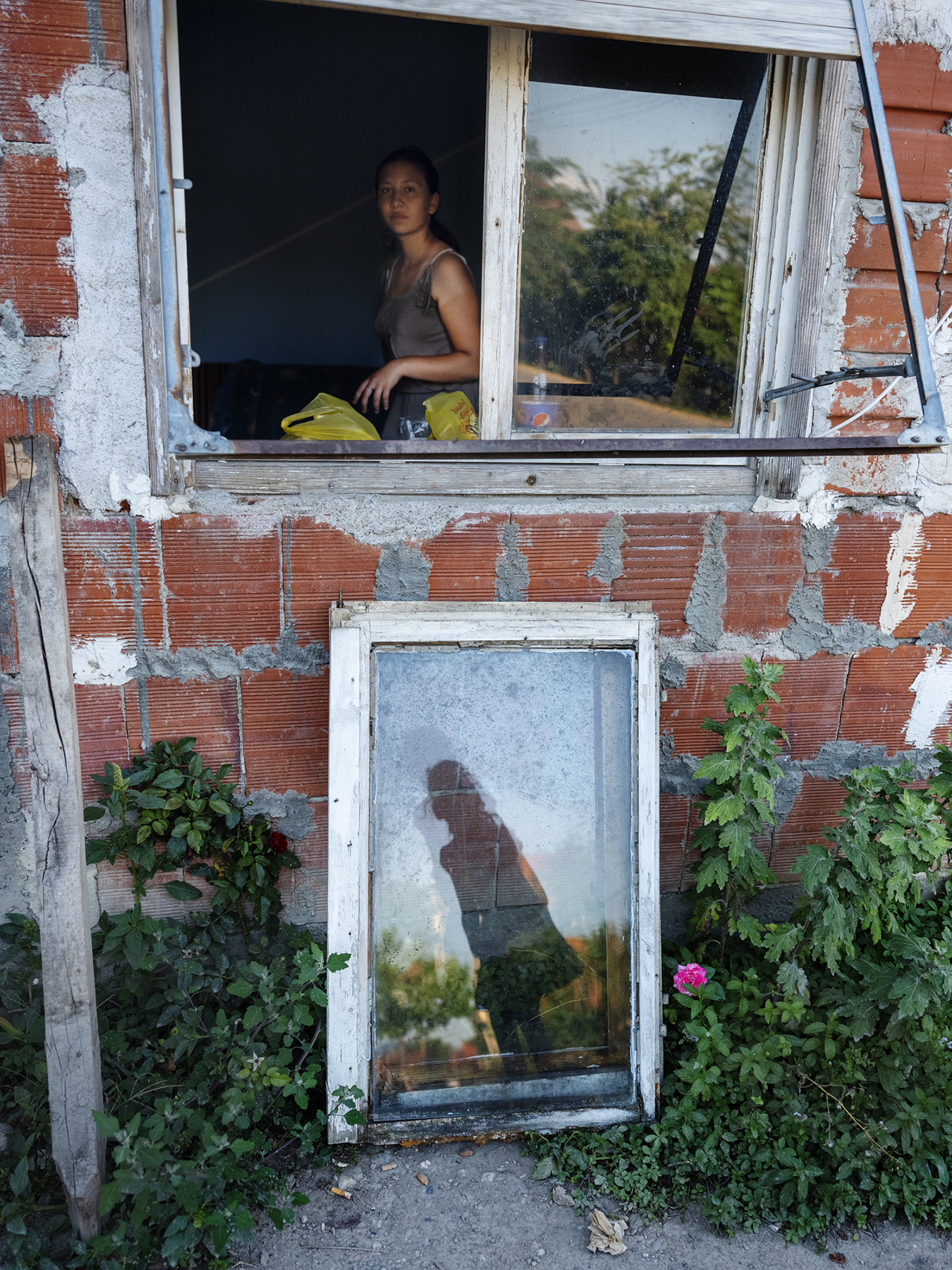
Kristina’s life hangs in the balance: having just finished her mandatory schooling, which she excelled at, she has realised that her family doesn’t have enough money for her to attend secondary school. They can’t afford the bus fare, lunch or book money that a school further away entail. Without that Kristina is destined to become a labourer like her mother, who sometimes has to works for as little as 5 € day. © Claudia Leisinger
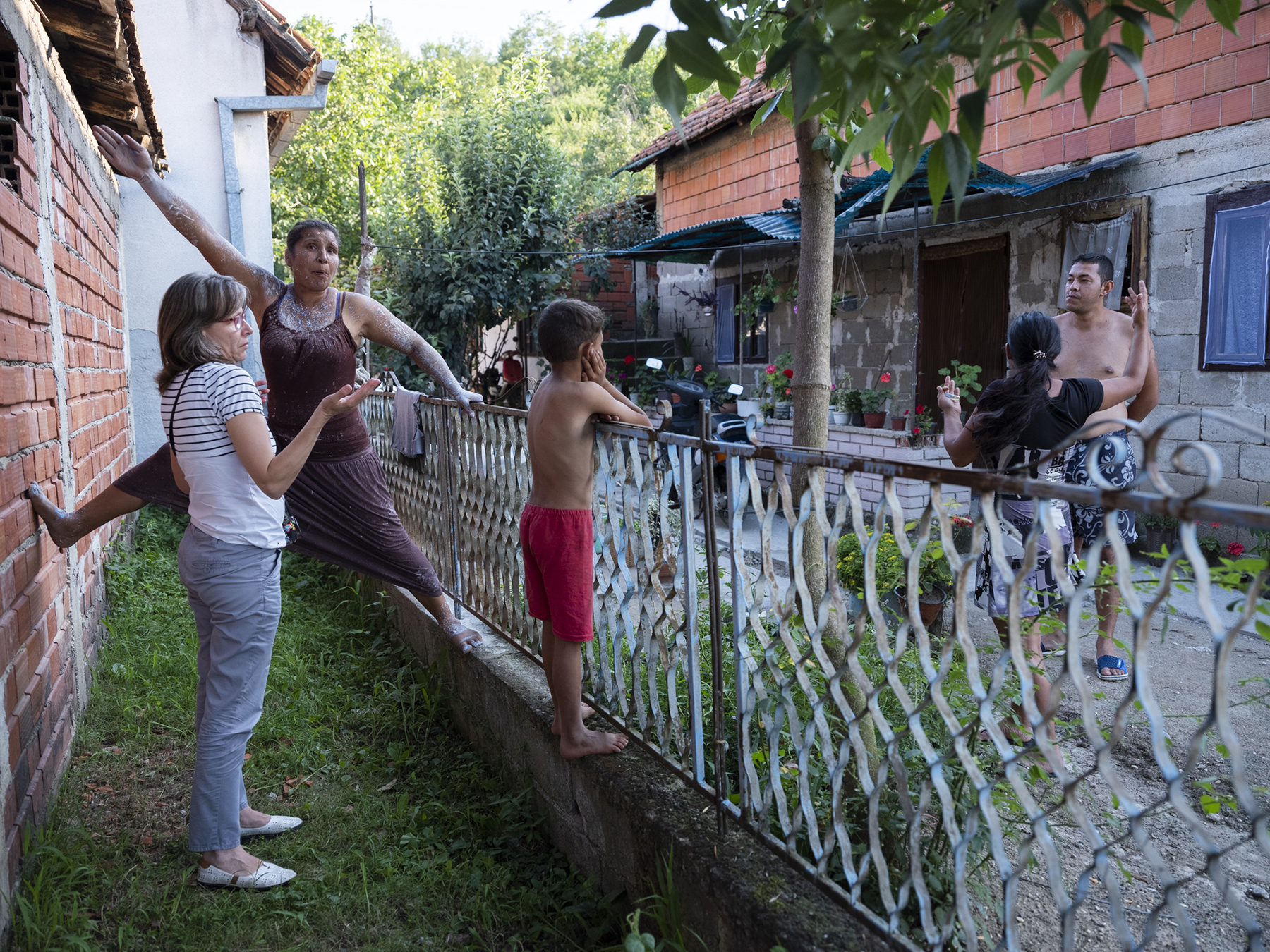
Gilbana’s neighbours complain that her new bathroom window is too big. EHO project manager Sladjana (in white T-shirt) knows that dealing with these jealousy-driven arguments head-on is an important part of her job. © Claudia Leisinger
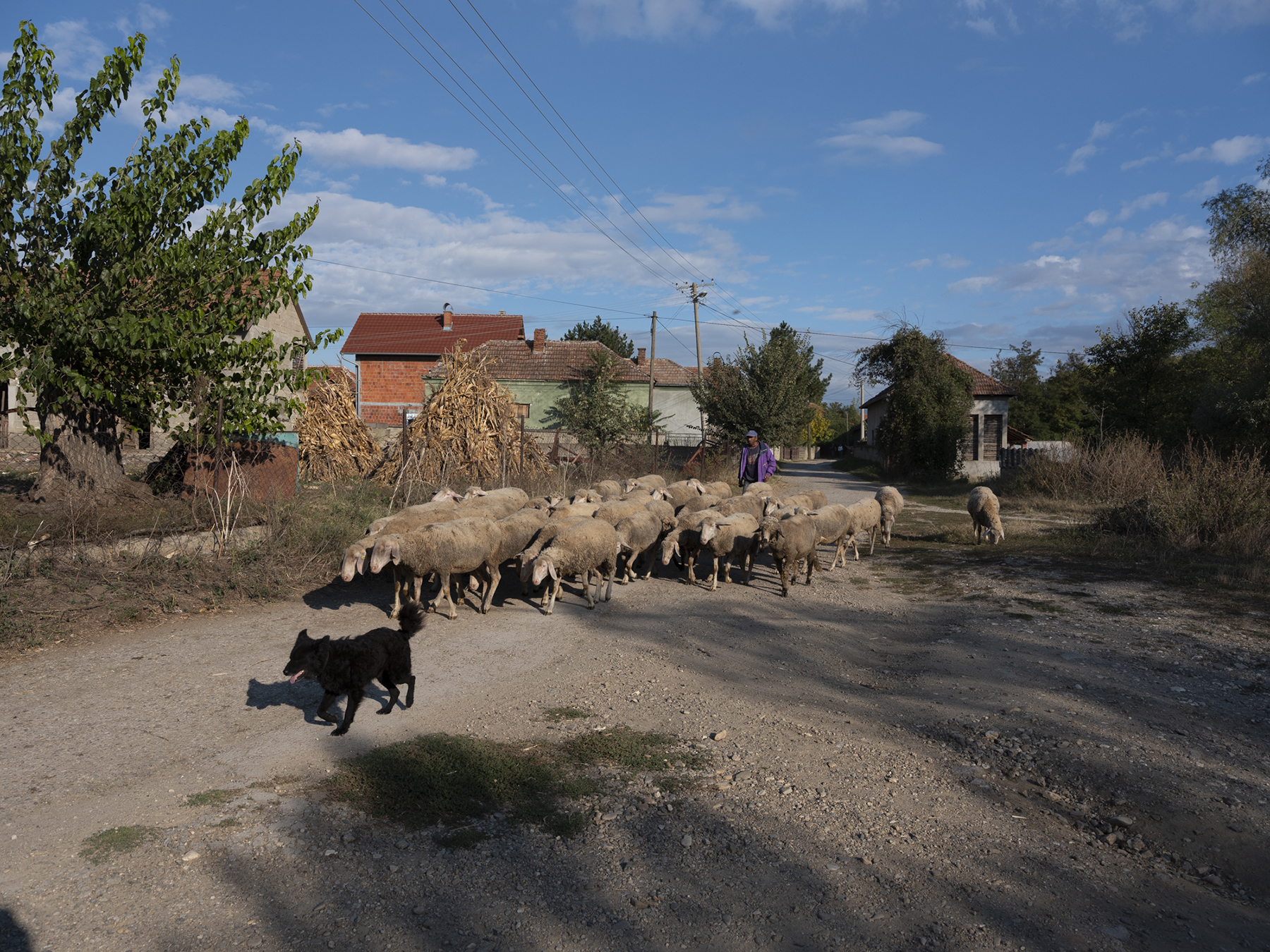
Slavisa, Daliborka’s husband, works as shepherd. One of the biggest issues facing the younger generation of Roma is the lack of social mobility, caused by inequality in education and a high unemployment rate, but also very clear social exclusion and open racism, which I have witnessed many times during my stay. © Claudia Leisinger
The project’s innovative and intricate structure has a strong emphasis on individual responsibility. The exchange of help, potentially creating dependency and expectation, is carefully considered and provides real incentive for the different stakeholders – Roma families, the surrounding communities and the municipality – to work together. The hope is that this interaction potentially creates new perspectives and a new understanding of each other’s lives.
These issues of immigration, particularly pronounced here in economically disadvantaged Serbia, are in fact the same all over Europe.
“How should we distribute our shared but finite resources and services?”
“Who should be entitled to what? ”
“How much must minorities conform to established social norms for integration to be successful?”
We all need to urgently discuss these questions to push against the fear-driven isolationist movements that are taking hold in our societies.
In Western Europe we have successfully controlled our environment to make it as non-invasive and non-aggressive as possible. Now we contemplate its beauty and maybe even mourn the loss of the wild, but it is kept at a manageable distance and we engage with it on our terms.
In Serbia, that process of controlled environment versus wild environment is at a different stage; certainly, at least, for people with no means.
The environment is still untamed, abundant and invasive. Its beauty and power are obvious and with this uncontrollable force comes also a tangible cruelty, a struggle for survival of the weakest creatures. This cruelty is mirrored in the lives of the people I have met.

Gilbana & Balkaza collect tomatoes from a Serbian farmer just down the road. © Claudia Leisinger
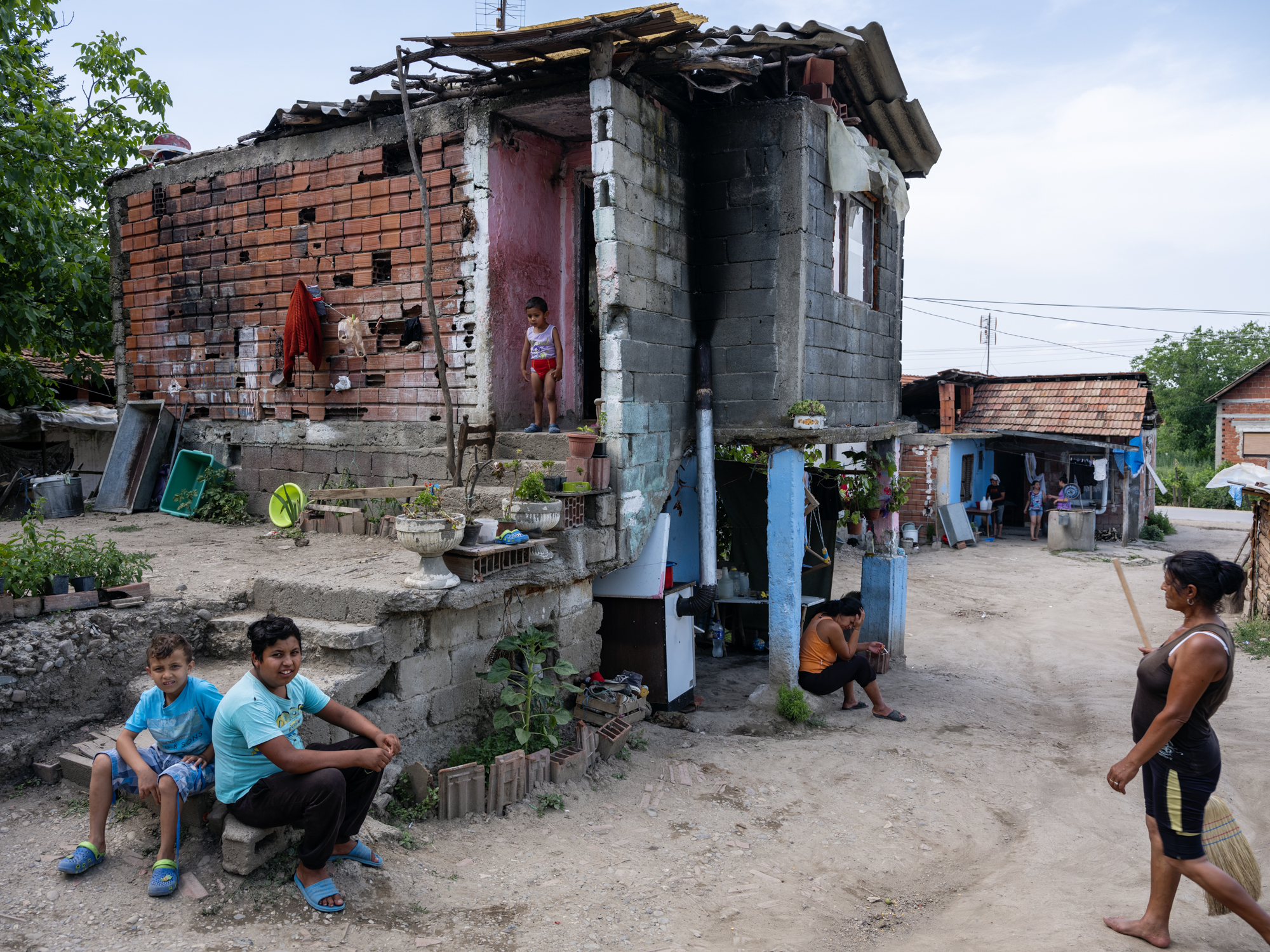
Balkaza, Daliborka & Gilbana are three women married to three brothers. Together they have 12 children and grandchildren. Nineteen people in all live on this small patch of land with no access to the water mains or the sewage system. © Claudia Leisinger
I wonder about the interplay of control and success in our societies and the value we attach to individuals who exert control over their environment.
It makes sense, then, that our capability to dominate is a very important factor in determining how well we integrate into the mainstream.
So, what does that mean – in Serbia and in Western societies alike – for people who either choose not to, or are unable to dominate their environment, and can’t exert the same degree of control over their lives?
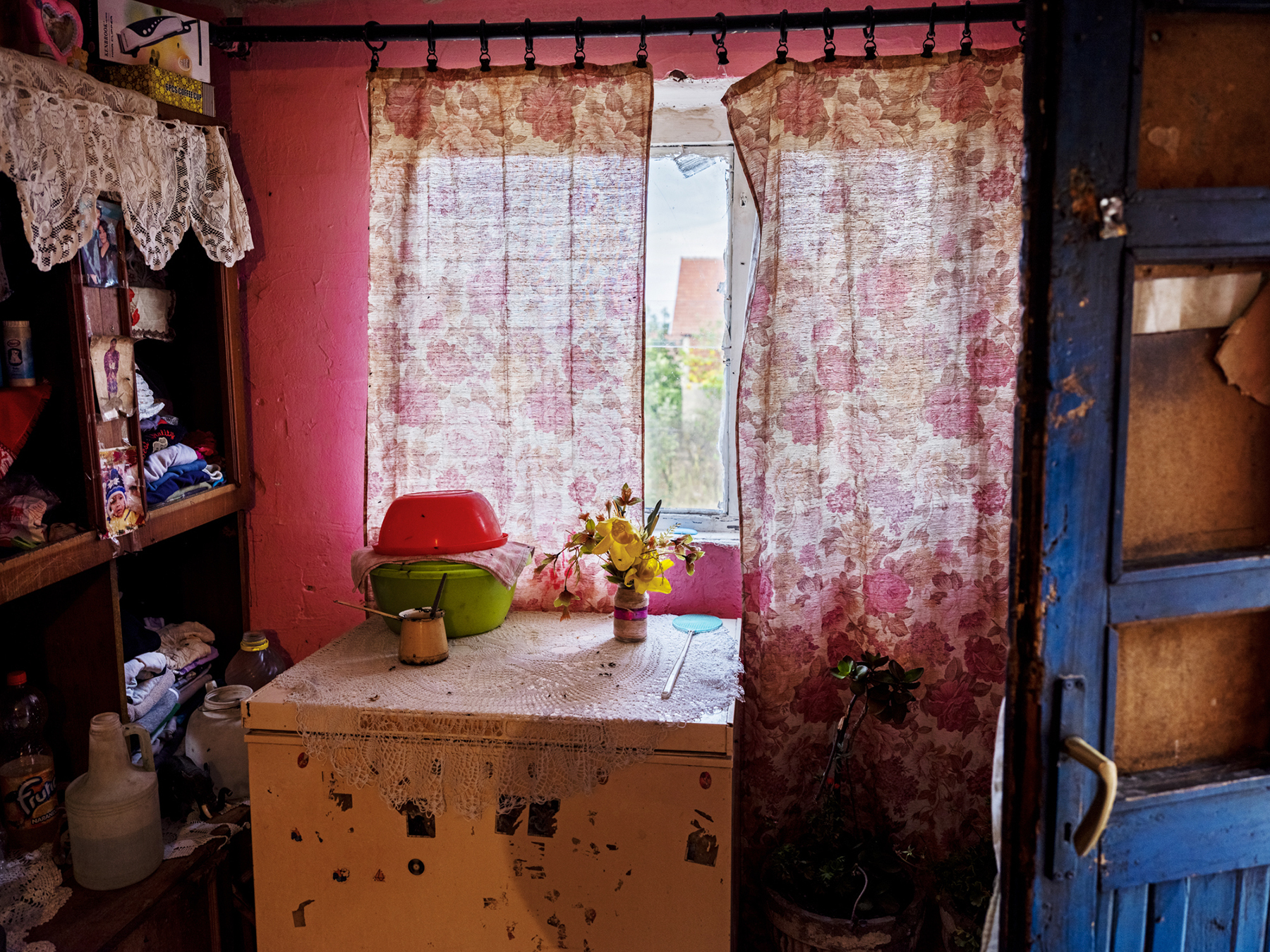
Doily and flowers in Balkaza’s room. © Claudia Leisinger
How should they go about finding their place in our society?
I would like to explore this facet more in future visits, as I feel this is a crucial aspect in the story of integration and acceptance within the modern world.
HEKS and EHO provide access and support for this project. They neither influence nor finance this story or its narrative.
My plan is to go back this summer, revisit the same families, spend a lot of time with them and then upon my return create a multimedia piece consisting of stills and audio (in situ recordings and interviews).
See Claudia’s Shutter Hub portfolio here, to find out more about her work, and visit her website here.
Not a Shutter Hub member yet? Join here for opportunities to promote your work online and in exhibitions, access selected opportunities, events, seminars and workshops, meet up and share photographic experiences, and become part of our growing community…





